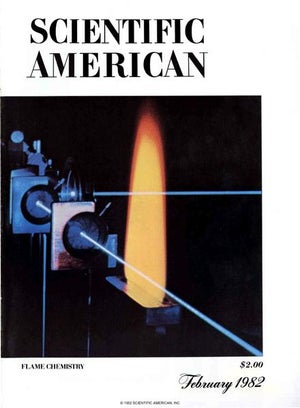The Biological Effects of Low-Level Ionizing Radiation
What is the hazard to human beings of ubiquitous low-level radiation from natural and artificial sources? The evidence so far indicates that compared with other hazards it is slight

You are currently logged out. Please sign in to download the issue PDF.
What is the hazard to human beings of ubiquitous low-level radiation from natural and artificial sources? The evidence so far indicates that compared with other hazards it is slight
At this site in Tanzania thousands of animal tracks, including those of predecessors of man, are found in volcanic ash that fell some 3.5 million years ago
Experiments with the Semliki Forest virus show in considerable detail how the cell is caused to manufacture new virus particles, including an outer membrane that is a piece of the cell's own
The largest moon of Saturn is the only moon in the solar system with a substantial atmosphere. The chemistry of the atmosphere may resemble that of the earth's atmosphere before life arose
Research in the field of combustion chemistry focuses mainly on the intermediate substances created as hydrocarbon fuels burn to produce carbon dioxide, water and trace pollutants
The light from most of these enigmatic objects was emitted 15 billion years ago. Therefore they are a unique clue to how the universe looked when it was only a fourth its present age
The visual environments of fishes are blue, green or near infrared. The retinal pigments acquired by diverse fish species in adapting to these environments are a valuable clue to the evolution of the eye
This 19th-century American physicist has been undervalued by history. Among his accomplishments was the building of the first engine for ruling the diffraction gratings on which modern spectroscopy depends